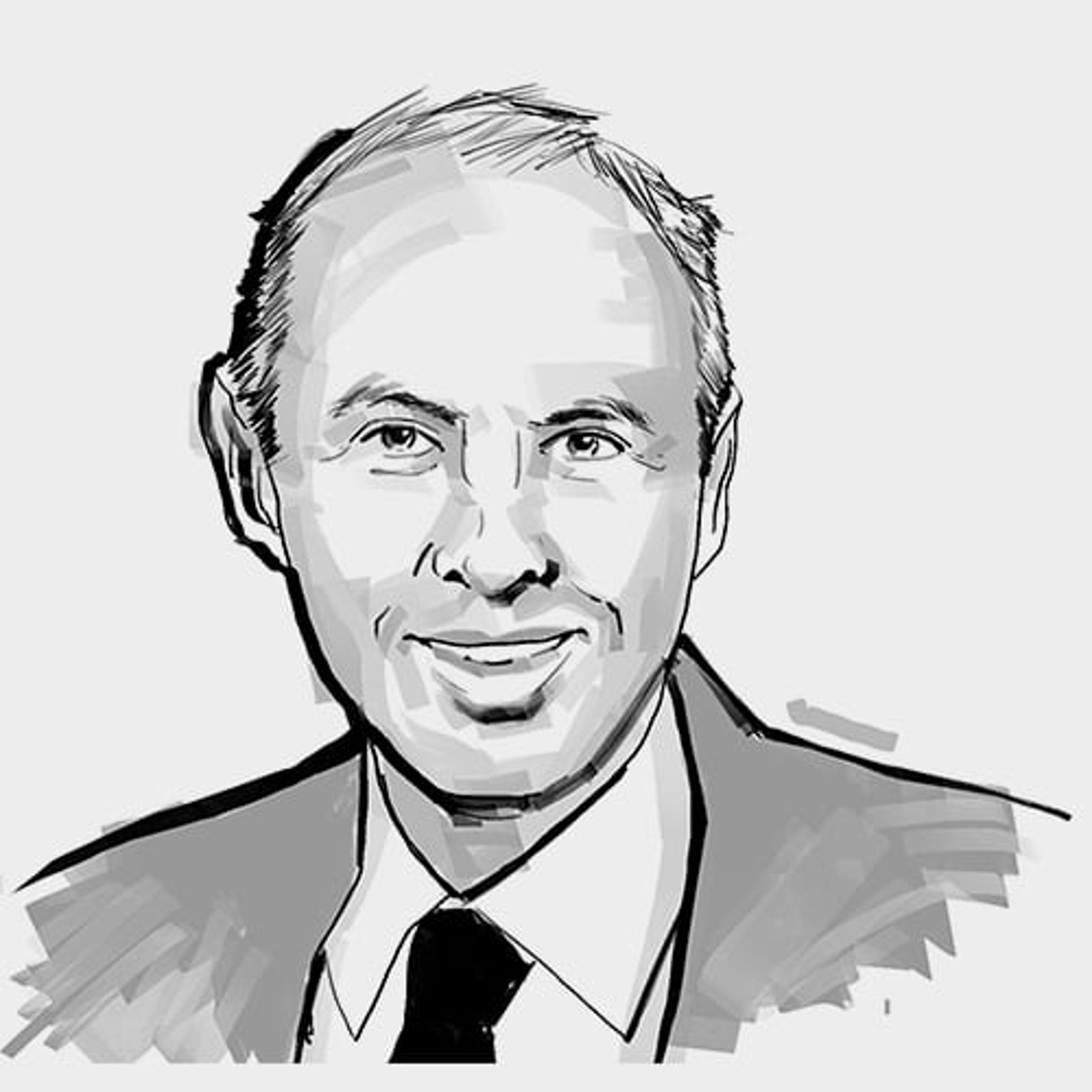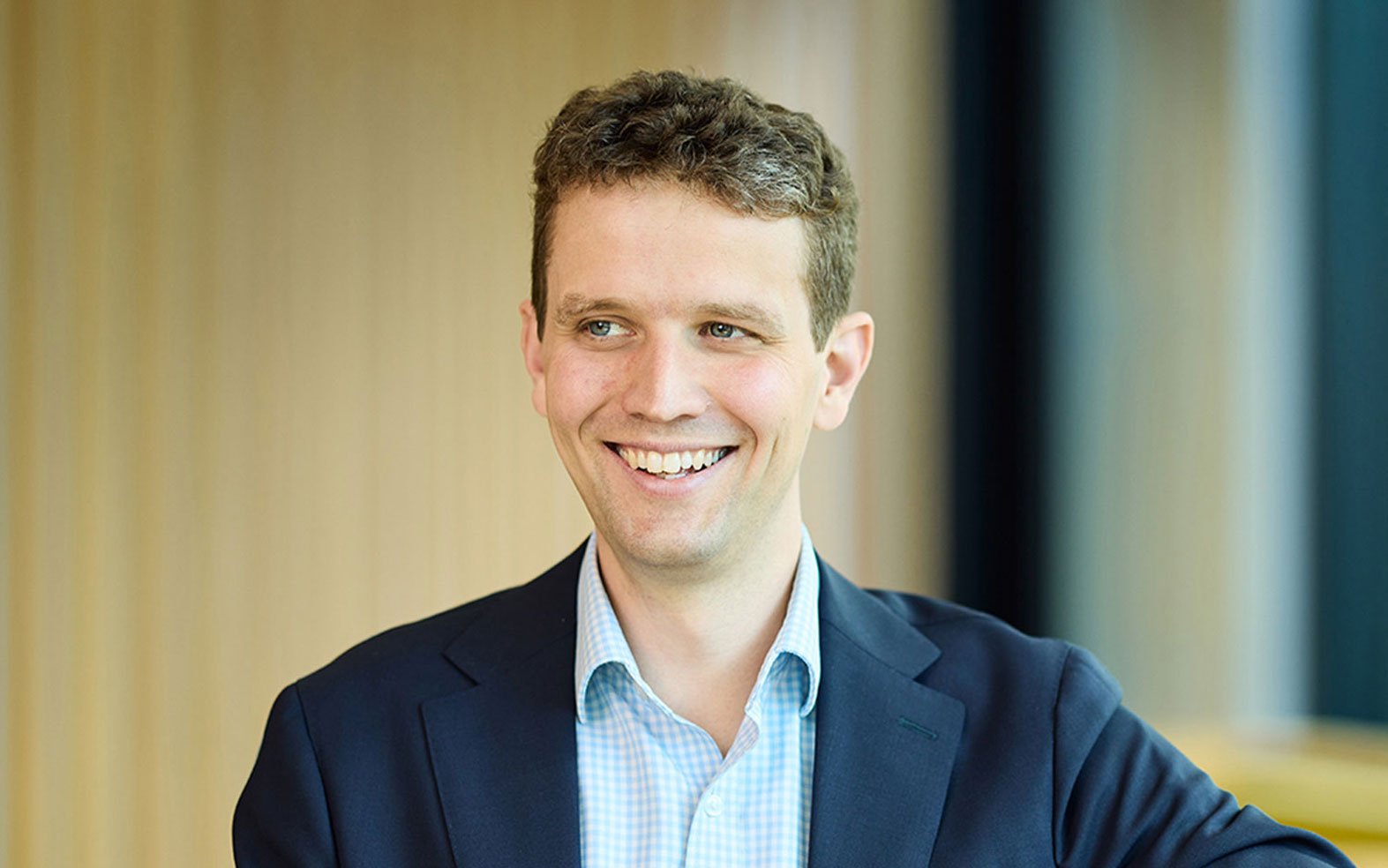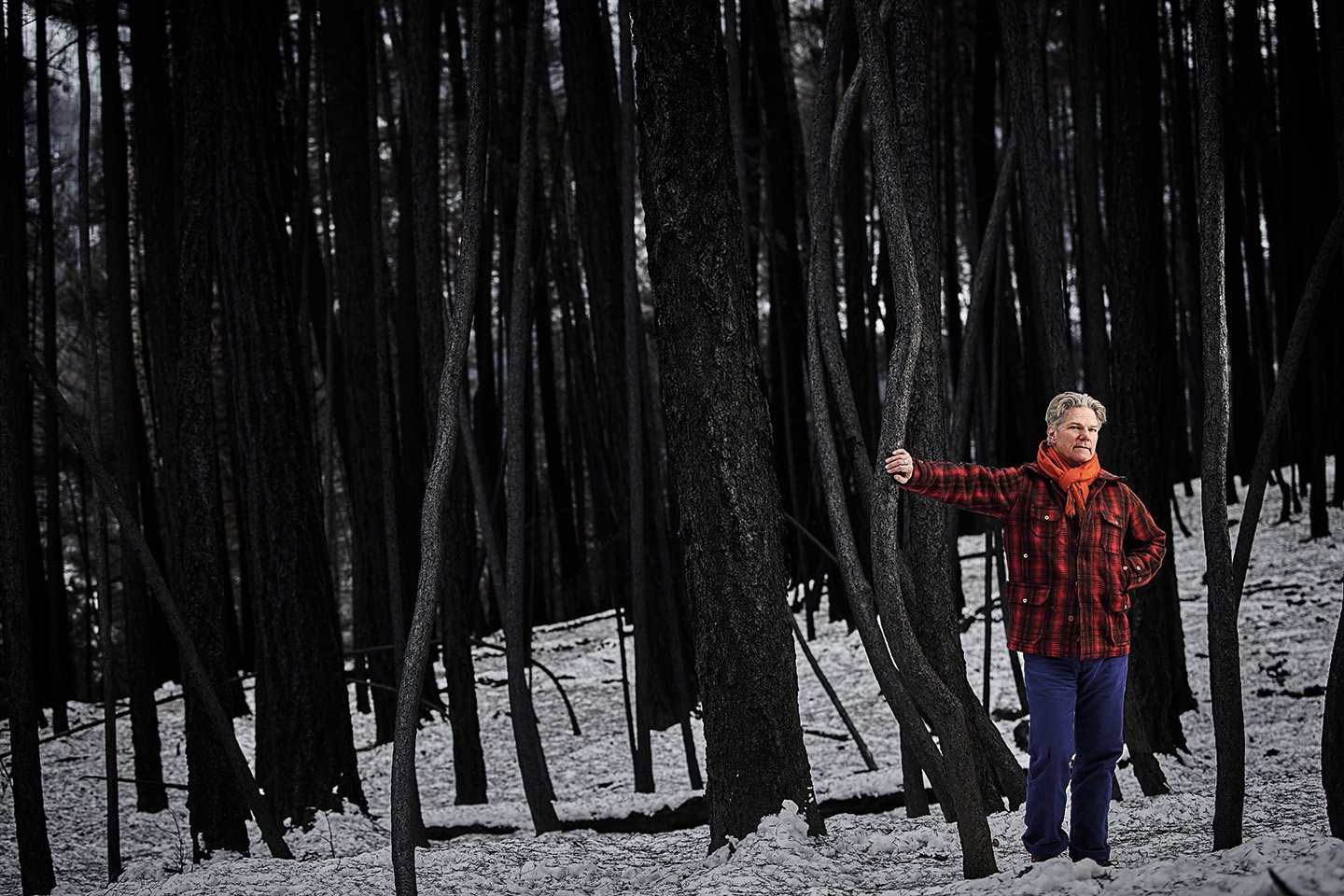
Black forest: John Vaillant in fire-ravaged Spences Bridge, British Columbia. Photography by John Sinal
Wayne McGrath crouched on his garage floor and took a couple of swigs of vodka. He phoned his son and said: “I’m in a predicament here, bud. I don’t know if I’m going to get out of this.”
The heat was intense. McGrath’s garage was filling with smoke, and from its window he could see a wildfire tearing through trees and encroaching on his house. Everyone else had long since fled the area. McGrath chose to leave the building and take a stand against the inferno. Armed with sprinklers, a garden hose and a bucketload of adrenaline, he drenched trees and fought fires to protect his house and garage. The latter stored his modified cars, boats, snowmobiles, all-terrain vehicles and prized Harley-Davidson.
McGrath’s tale is one of many that John Vaillant tells in his book Fire Weather: A True Story from a Hotter World, which won 2023’s Baillie Gifford Prize for Non-Fiction. He describes the 45-year-old welder’s rearguard action in Fort McMurray, Alberta, as a “desperate game of whack-a-mole, only with fire and mortal stakes”. The wiry hero and his motorcycle survived the blaze, but it reduced his house and most of his possessions to ashes.
Climate change's cost
Vaillant highlights the importance of telling people’s stories on our Zoom chat from his Vancouver home. He says we often overly intellectualise climate change. “It’s one way that we get to grips with things, but it’s also a way of keeping alarming future scenarios at bay,” he explains. “There’s something about these folks’ stories, the way this event came into their day and disrupted and broke it irreparably. I was deeply moved that they cried in front of me, and I cried later reading their interviews.”
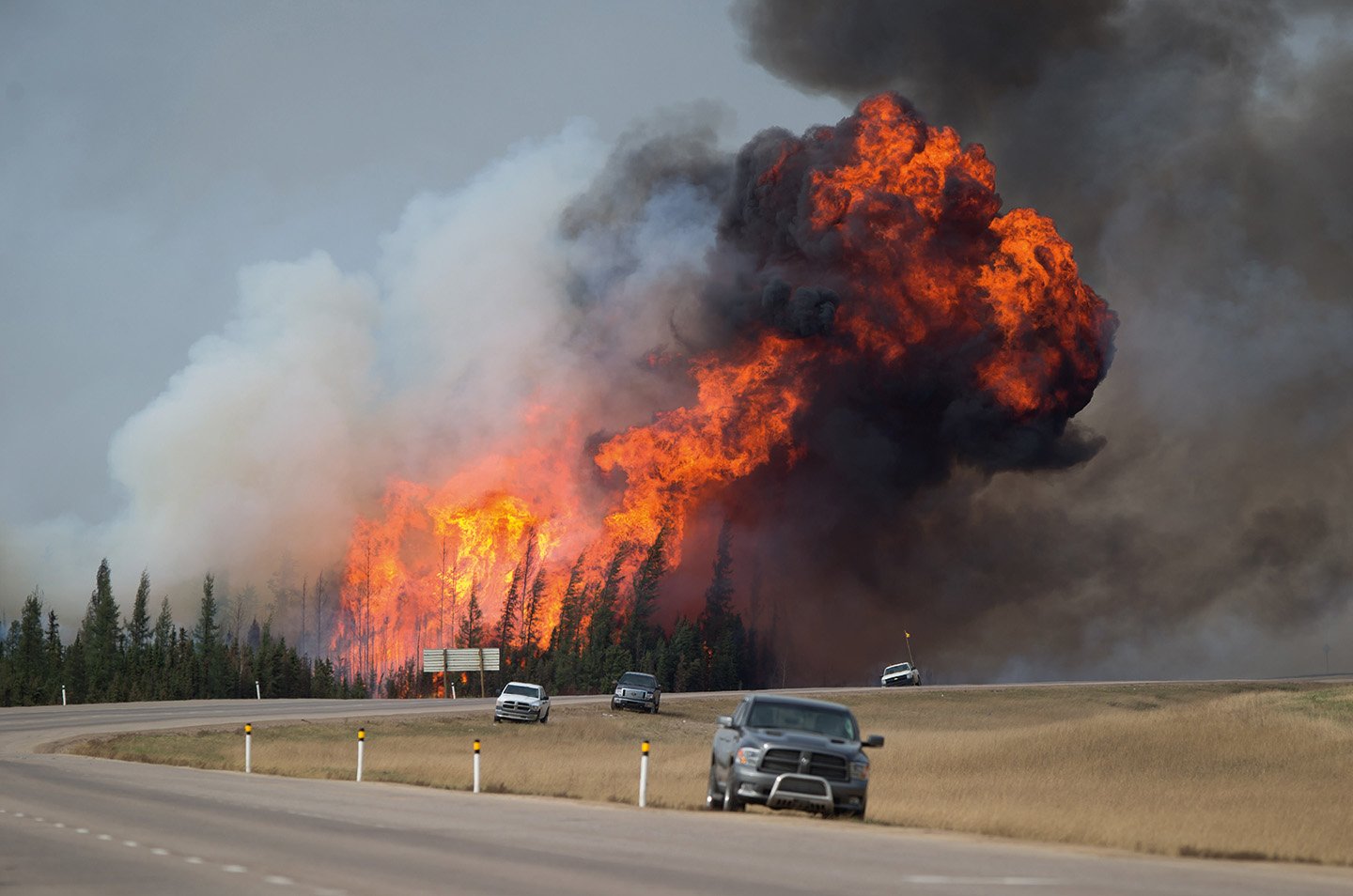
Hastily abandoned cars on Alberta Highway 63 near Fort McMurray, 7 May 2016. © Bloomberg/Getty Images
There’s a connection between the author and his subjects, which enables Vaillant to tell their stories so well. McGrath comes from a mining town, Vaillant from the wealthy education and technology hub of Cambridge, Massachusetts. “I grew up in an academic family,” he says. “If they did anything with their hands, it was playing an instrument.”
The US-Canadian writer understood what he was missing, so he travelled to a remote part of Alaska to find work. He spent time there with mechanics and fishermen. “I learned how to operate in their world,” Vaillant says. “It helped me to learn and feel an affinity for people like Wayne McGrath.”
The Fort McMurray blaze started on 3 May 2016 and wasn’t fully extinguished until more than a year later. The rough and rich little city is in north-west Canada, 600 miles north of the US border and 600 miles south of the Arctic Circle. Forests of aspen, pine and spruce surround it, and the Athabasca River flows through it. The wider natural landscape resembles Siberia, but the area around Fort McMurray has been rendered hellish by the dirty and difficult business of exploiting the abundant ‘tar sands’.
A perfect firestorm
Surprisingly, the perfect conditions for one of the most ferocious fires in human history occurred in a place that many of us think of as cold and wet. Vaillant describes the unusual tinderbox conditions on 3 May: “It was Death Valley dry that day, as hot as Southern California and as dry as Southern California.” Temperatures had reached 33C in the North American Subarctic, where they typically peak about 10 degrees lower at that time of year.
The wildfire takes a leading role in his book, exhibiting a terrifying ability to adapt and turn into a hungry, malignly motivated foe. It created 100-meter-high flames and boulder-sized fireballs that shot between trees, burning at 500C. “Once the embers start flying, the landscape belongs to the fire,” says Vaillant.
The firefighters fought the blaze house-to-house, building firebreak after firebreak. But it kept spreading. About 90,000 people evacuated the city on the first day. Within a week, the fire had destroyed 2,500 structures and nearly 2,300 sq miles of forest, an area almost four times the size of Greater London.
Dirty black gold
So, given its remote location, why do people flock to Fort McMurray?
The region is home to the world’s largest deposits of natural bitumen, a tarry form of extra-heavy petroleum that requires much more energy-intensive refining than ordinary crude oil. Canada is the world’s third-largest oil exporter, most of it coming from Fort Mac, as locals know it, and the surrounding area. This has led to a rush of oil companies and migrants moving there to seek their fortune. Another nickname is Fort McMoney. In the year of the fire, the city’s median household income was nearly C$200,000 (£109,000). Little known outside Canada, the oil hub runs deep through the country’s psyche.
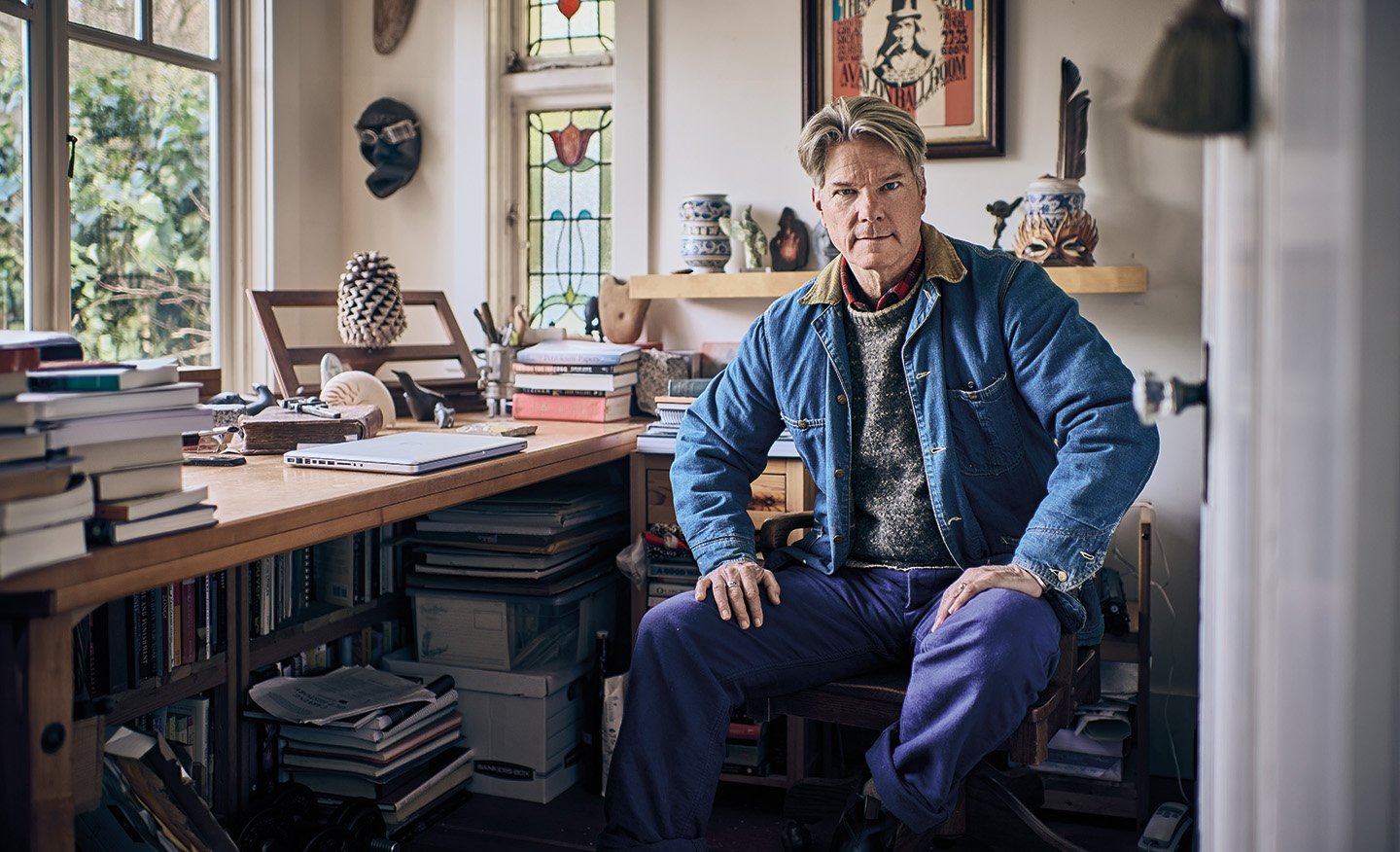
John Vaillant photographed at his home in Vancouver.
Vaillant wrote the book to highlight what he describes as the “creeping influence of climate change, which makes these fires much more lethal”. Frederick Studemann, literary editor at the Financial Times and chair of the Baillie Gifford Prize for Non-Fiction judges, describes Fire Weather as “an extraordinary and elegantly rendered account of a terrifying climate disaster that engulfed a community and industry, underscoring our toxic relationship with fossil fuels”.
The fire is a harbinger of what’s to come, warns Vaillant. “Look at the last five years of wildfires in the US, Greece, Spain, Australia, Algeria, Syria and even England,” he says. “These are things that are really hard to compute.”
Vaillant sees climate change’s effects across Canada. Mild winters mean you can’t skate on the Rideau Canal in Ottawa any more and the ice roads that connect remote communities in Canada are opening steadily later and closing earlier. On the other side of the country, he describes his home city of Vancouver as the “poster child for climate change because it’s getting hammered, and it’s no longer the paradise it was 15 years ago”. British Columbia is becoming more like Alberta. Winters are warming, summers are drier, and droughts are increasing.
Lessons for capitalists
The Vancouverite urges Baillie Gifford and other financial institutions to draw on a fellow Canadian for inspiration. Then governor of the Bank of England Mark Carney warned an audience at a Lloyd’s of London dinner a few months before the blaze in Fort Mac: “The challenges currently posed by climate change pale in significance compared with what might come… Once climate change becomes a defining issue for financial stability, it may already be too late.”
“The career capitalist from Alberta understands the tangible risks posed by climate change,” Vaillant comments. But, he adds, the polarised debate on climate change is “totally unhelpful, and it’s manipulative”.
“There are climate-denying knuckleheads in some towns, but they’re not the problem. The media manipulates it, so do very, very canny PR firms, many of which work for banks and petroleum companies to foment misunderstanding, confusion and anger.”
So how do we find a way through this? Vaillant argues it’s “insane to focus on expanding markets and developing resources on planet Earth without considering chemistry and physics. It’s like stepping out of a third-storey window without stairs.” He urges companies and investors to become better at balancing the competing demands of science and profits, and to spend more time engaging with climate scientists.
Radical thinking and action are required to tackle climate change, according to the writer. “We need to look at the data, listen to the climate scientists and focus on a kind of Marshall Plan,” he says, suggesting that wealthier countries help cover the costs of poorer nations. “It’s all hands on deck: we must decarbonise, regenerate forests and stabilise water temperature.”
Vaillant suggests businesses and investors must reframe the narrative and their metrics to account for the hidden costs of environmental impacts, especially warming. “This might mean reducing profits for a time,” according to Vaillant. “That’s the tyranny of the problem. This way, you may increase the chances of being able to go to the beach with your kid and not getting third-degree blisters on your feet from the sand, which is what’s happening in Phoenix, Arizona. You can’t live that way.” On the flip side, changing the narrative also creates an opportunity for genuinely sustainable companies to emerge.
Vaillant claims he’s not a “Marxist, ‘doomer’ or anti-capitalist”. Ultimately, he’s optimistic we will avoid the scenario when global warming ended the Permian Age 250 million years ago, leading to mass extinction.
He says we need to summon the survival instincts of all the generations that have preceded us. “When I’m feeling down in the dumps, I think about them,” admits the author. “They would say: ‘John, we did not come all this way and go through all this so you could give up.’ I feel energised and inspired by this. Our real superpower isn’t our ability to extract hydrocarbons from the Earth in unfathomable quantities and burn them faster than anybody’s burned anything in the history of the world. It’s community. It’s our ability to care for each other and to solve problems collectively.”


Important information
The views expressed should not be considered as advice or a recommendation to buy, sell or hold a particular investment. They reflect opinion and should not be taken as statements of fact nor should any reliance be placed on them when making investment decisions.
This communication contains information on investments which does not constitute independent research. Accordingly, it is not subject to the protections afforded to independent research, but is classified as advertising under Art 68 of the Financial Services Act (‘FinSA’) and Baillie Gifford and its staff may have dealt in the investments concerned.
All information is sourced from Baillie Gifford & Co and is current unless otherwise stated.
The images used in this communication are for illustrative purposes only.
Baillie Gifford & Co and Baillie Gifford & Co Limited are authorised and regulated by the Financial Conduct Authority (FCA). Baillie Gifford & Co Limited is an Authorised Corporate Director of OEICs.
Baillie Gifford Overseas Limited provides investment management and advisory services to non-UK Professional/Institutional clients only. Baillie Gifford Overseas Limited is wholly owned by Baillie Gifford & Co. Baillie Gifford & Co and Baillie Gifford Overseas Limited are authorised and regulated by the FCA in the UK.
Persons resident or domiciled outside the UK should consult with their professional advisers as to whether they require any governmental or other consents in order to enable them to invest, and with their tax advisers for advice relevant to their own particular circumstances.
Financial Intermediaries
This communication is suitable for use of financial intermediaries. Financial intermediaries are solely responsible for any further distribution and Baillie Gifford takes no responsibility for the reliance on this document by any other person who did not receive this document directly from Baillie Gifford.
Europe
Baillie Gifford Investment Management (Europe) Limited provides investment management and advisory services to European (excluding UK) clients. It was incorporated in Ireland in May 2018. Baillie Gifford Investment Management (Europe) Limited is authorised by the Central Bank of Ireland as an AIFM under the AIFM Regulations and as a UCITS management company under the UCITS Regulation. Baillie Gifford Investment Management (Europe) Limited is also authorised in accordance with Regulation 7 of the AIFM Regulations, to provide management of portfolios of investments, including Individual Portfolio Management (‘IPM’) and Non-Core Services. Baillie Gifford Investment Management (Europe) Limited has been appointed as UCITS management company to the following UCITS umbrella company; Baillie Gifford Worldwide Funds plc. Through passporting it has established Baillie Gifford Investment Management (Europe) Limited (Frankfurt Branch) to market its investment management and advisory services and distribute Baillie Gifford Worldwide Funds plc in Germany. Similarly, it has established Baillie Gifford Investment Management (Europe) Limited (Amsterdam Branch) to market its investment management and advisory services and distribute Baillie Gifford Worldwide Funds plc in The Netherlands. Baillie Gifford Investment Management (Europe) Limited also has a representative office in Zurich, Switzerland pursuant to Art. 58 of the Federal Act on Financial Institutions (‘FinIA’). The representative office is authorised by the Swiss Financial Market Supervisory Authority (FINMA). The representative office does not constitute a branch and therefore does not have authority to commit Baillie Gifford Investment Management (Europe) Limited. Baillie Gifford Investment Management (Europe) Limited is a wholly owned subsidiary of Baillie Gifford Overseas Limited, which is wholly owned by Baillie Gifford & Co. Baillie Gifford Overseas Limited and Baillie Gifford & Co are authorised and regulated in the UK by the Financial Conduct Authority.
Hong Kong
Baillie Gifford Asia (Hong Kong) Limited
柏基亞洲(香港)有限公司 is wholly owned by Baillie Gifford Overseas Limited and holds a Type 1 and a Type 2 license from the Securities & Futures Commission of Hong Kong to market and distribute Baillie Gifford’s range of collective investment schemes to professional investors in Hong Kong. Baillie Gifford Asia (Hong Kong) Limited 柏基亞洲(香港)有限公司 can be contacted at Suites 2713-2715, Two International Finance Centre, 8 Finance Street, Central, Hong Kong. Telephone +852 3756 5700.
South Korea
Baillie Gifford Overseas Limited is licensed with the Financial Services Commission in South Korea as a cross border Discretionary Investment Manager and Non-discretionary Investment Adviser.
Japan
Mitsubishi UFJ Baillie Gifford Asset Management Limited (‘MUBGAM’) is a joint venture company between Mitsubishi UFJ Trust & Banking Corporation and Baillie Gifford Overseas Limited. MUBGAM is authorised and regulated by the Financial Conduct Authority.
Australia
Baillie Gifford Overseas Limited (ARBN 118 567 178) is registered as a foreign company under the Corporations Act 2001 (Cth) and holds Foreign Australian Financial Services Licence No 528911. This material is provided to you on the basis that you are a ‘wholesale client’ within the meaning of section 761G of the Corporations Act 2001 (Cth) (‘Corporations Act’). Please advise Baillie Gifford Overseas Limited immediately if you are not a wholesale client. In no circumstances may this material be made available to a ‘retail client’ within the meaning of section 761G of the Corporations Act.
This material contains general information only. It does not take into account any person’s objectives, financial situation or needs.
South Africa
Baillie Gifford Overseas Limited is registered as a Foreign Financial Services Provider with the Financial Sector Conduct Authority in South Africa.
North America
Baillie Gifford International LLC is wholly owned by Baillie Gifford Overseas Limited; it was formed in Delaware in 2005 and is registered with the SEC. It is the legal entity through which Baillie Gifford Overseas Limited provides client service and marketing functions in North America. Baillie Gifford Overseas Limited is registered with the SEC in the United States of America.
The Manager is not resident in Canada, its head office and principal place of business is in Edinburgh, Scotland. Baillie Gifford Overseas Limited is regulated in Canada as a portfolio manager and exempt market dealer with the Ontario Securities Commission (‘OSC’). Its portfolio manager licence is currently passported into Alberta, Quebec, Saskatchewan, Manitoba and Newfoundland & Labrador whereas the exempt market dealer licence is passported across all Canadian provinces and territories. Baillie Gifford International LLC is regulated by the OSC as an exempt market and its licence is passported across all Canadian provinces and territories. Baillie Gifford Investment Management (Europe) Limited (‘BGE’) relies on the International Investment Fund Manager Exemption in the provinces of Ontario and Quebec.
Israel
Baillie Gifford Overseas Limited is not licensed under Israel’s Regulation of Investment Advising, Investment Marketing and Portfolio Management Law, 5755-1995 (the Advice Law) and does not carry insurance pursuant to the Advice Law. This material is only intended for those categories of Israeli residents who are qualified clients listed on the First Addendum to the Advice Law.
92925 10045468

